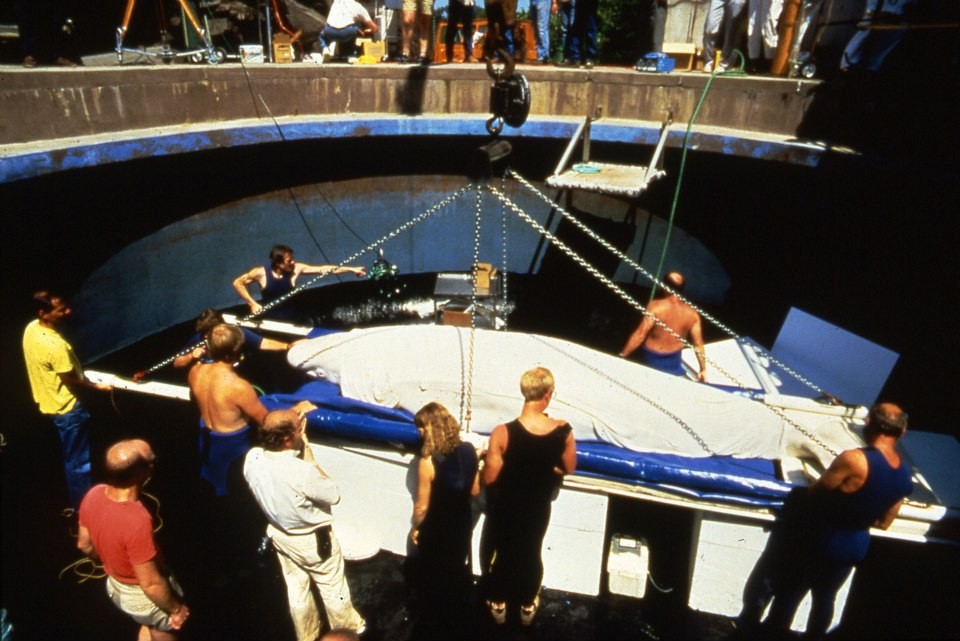What: Discussion of “Through the Portals of Pigs and Manure, The Story of the Minnesota Influence on American Surgery” with Dr. Arnold Leonard
When: 4 p.m., Wednesday
Where: Coffman Union Bookstore, 300 Washington Ave. SE, Minneapolis
Just as doctors might do to patients in a hospital, Arnold Leonard once used specially fitted plastic tubing to administer oxygen to a beluga whale. In the summer of 1986, Leonard and others adopted the tubing for the mammal’s blowhole in preparation for the whale’s emergency operation.
He details the pioneering procedure — influenced by his mentor Dr. Owen Wangensteen — in his new book about the history of the University of Minnesota’s medical advances, titled “Through the Portals of Pigs and Manure: The Story of the Minnesota Influence on American Surgery.”
“The [Minnesota] Zoo called me out of the blue,” Leonard said. “This 1,700-pound Beluga whale had a big lesion on its jaw and they didn’t know what to do.”
Leonard, the former head of pediatric surgery at the University, joined the team because of his experience with facial reconstruction surgery, though not on white whales.
“They asked if I had a team and if I could do something about it,” Leonard said. “They called in 10 people and we sat around a table. They told me I was crazy, and that we couldn’t operate on a whale.”
Big Mouth, the Minnesota Zoo’s beluga whale, required a 17-member team that included surgeons, nurses, anesthesiologists, marine specialists and veterinarians. But before the two-hour operation to excise Big Mouth’s debilitating oral lesion, Leonard and the team couldn’t identify the mysterious infection’s cause.
“The big day came — the biopsy. We weren’t sure if this was a cancer. What it turned out to be was osteomyelitis,” Leonard said. “It was a bone infection all the way through the jaw.”
After the biopsy, Leonard and the team removed the lesion and closed the wound with heavy steel wire and nylon sutures. Surgeons worked on an operating table large enough for the whale, in the middle of the zoo’s drained holding tank. Eventually they reconstructed the whale’s mandible and Big Mouth recovered — he started eating several pounds of fish daily.
Frank Wright, head veterinarian at the zoo at the time, said some experts on the team estimated Big Mouth’s chances of surviving the operation to be 20 percent. Following the successful procedure, the zoo reunited Big Mouth with his female companion, Little Girl.
“He gets in there, sees Little Girl and penetrated her,” Leonard said. “It was very emotional to see the two of them.”
Although the story of Big Mouth ended in 1990 when the San Diego’s SeaWorld was forced to euthanize the dying elderly whale, the surgery represents the lasting influence of the University’s leading efforts in the medical field, Leonard said. Many of the advancements in the University’s Medical School, from the first open-heart surgery to the pacemaker, have their origins in initial operations on animals like Big Mouth.
Writing about Wangensteen, the chief of surgery for University hospitals until 1967, Leonard recounts his predecessor’s foray into medicine as heavily inspired by his interest in his father’s farm animals. In early 1900s, the young Wangensteen delivered 300 piglets on his farm. Wangensteen later applied to the University, interested in pursuing veterinary medicine. During his summer vacations working on his father’s farm and hauling manure, he decided to become a physician instead.
“Dr. Wangensteen often told me, and to others, that it was through portals of pigs and manure that he decided to go into the medical field,” Leonard writes.
The head of the Department of Surgery at the University since 1930, Wangensteen’s teaching guided Leonard’s generation of medical innovators, according to “Through the Portals.” Leonard’s book details everything from the origins of the pacemaker to the forefront of cancer research in genetic engineering at the University. Leonard’s stories point to the ingenuity and imagination that Wangensteen initially fostered.
“His philosophy was to train individuals to think on their own,” Leonard said. “New ideas, perseverance, enthusiasm — all the things to make a person successful.”
All proceeds from “Through the Portals of Pigs and Manure” benefit the Arnold S. Leonard Cancer Research Fund.









Geeta Phansalker
Apr 1, 2024 at 9:39 pm
I love the idea of people to think on their own.
Anyone can read up and claim that they knew it all along.